JOHN McDONALD: Julie Mehretu’s abstract work is elite, energetic art. Her politics, not so much
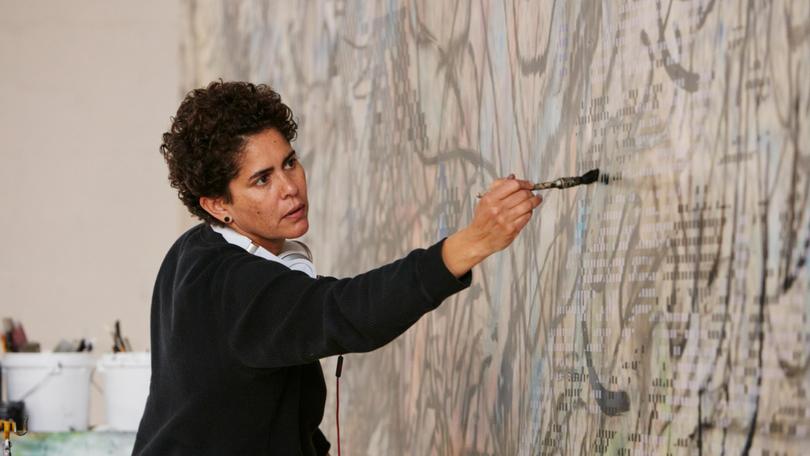
Mark Rothko painted vertical arrangements of blurry rectangles on fields of colour, but denied these works were abstract. “There is no such thing as good painting about nothing,” he grumbled. Rothko saw himself as a realist, “interested only in expressing basic human emotions – tragedy, ecstasy, doom, and so on.”
His proof was that viewers would occasionally shed tears in front of his paintings, feeling the emotions he felt, although it’s not an argument that would hold up in court or in the pub. For most viewers, Rothko’s paintings are “abstract” because they do not depict recognisable forms, merely the same blurry rectangles that induce bouts of weeping.
Since Rothko, no artist has made broader, more sweeping claims about abstraction than Julie Mehretu, currently showing at the Museum of Contemporary Art, Sydney. Rather than repudiate the term, she embraces it, then loads it up with meanings that would have made Kandinsky gasp.
Sign up to The Nightly's newsletters.
Get the first look at the digital newspaper, curated daily stories and breaking headlines delivered to your inbox.
By continuing you agree to our Terms and Privacy Policy.Mehretu’s show goes by the title: A Transcore of the Radical Imaginatory. No-one seems to have told her that in Australia, successful exhibitions usually have titles such as: Masterpieces from the Musée d’Orsay or Gold of the Pharaoahs. The three magical elements are sex, jewels and Monet, suggesting that the ideal Oz exhibition title might be Monet’s Sexy Jewels.
For Mehretu, it hardly matters what she calls her exhibition. She is one of the superstars of contemporary art - the sixth best-selling artist in the world in 2023 and rising fast. Born in Addis Adaba, Ethiopia, in 1970, she moved with her family to East Lansing, Michigan, in 1977, emerging as a winning combination of African ethnicity and American knowhow.
In 2019, Mehretu’s mid-career retrospective was shown in Los Angeles, New York, Atlanta and Minneapolis, cementing her reputation as one of America’s leading artists. The MCA survey is her first solo show in Australia, but it wasn’t possible to get hold of earlier works. Instead, there are 36 paintings produced between 2018-24, along with prints and drawings from 2016 onwards. The most recent are her TRANSpaintings (2023-24), rendered on a translucent material called monofilament polyester mesh, displayed in freestanding aluminium frames designed by sculptor, Nairy Baghramian.
It may sound gimmicky, but to read about these works in the catalogue is to imagine we are in the presence of multiple Shrouds of Turin. Nevertheless, it’s impossible not to be impressed by Mehretu’s superabundant energy and her ability to negotiate paintings on an awesome scale. She is also a big thinker and talker, although one wonders if she ever read Matisse’s famous advice that if you want to be a painter first you must cut out your tongue.
That was career guidance from last century, today the opposite applies. If you want to be a successful contemporary painter, you must talk and write constantly, associating yourself with every current trend in art and politics. One of the features of this show is the protective cocoon of words that surrounds Mehretu’s paintings.
We’re told that one of her “formative influences” is Rembrandt’s painting, The Sacrifice of Isaac (1635). “Might Mehretu’s intimate abstractions contain a similar command for bearing witness to this invisible face of the Other?” writes catalogue essayist, Erik Morse. Well, if you say so, Erik, although it’s hard to imagine anyone walking in off the street, looking at one of these squiggly abstractions and declaring: “Why that’s the dead spit of Rembrandt’s Sacrifice of Isaac!” Or maybe: “Y’know, I was just thinking this painting bears witness to the invisible face of the Other.”
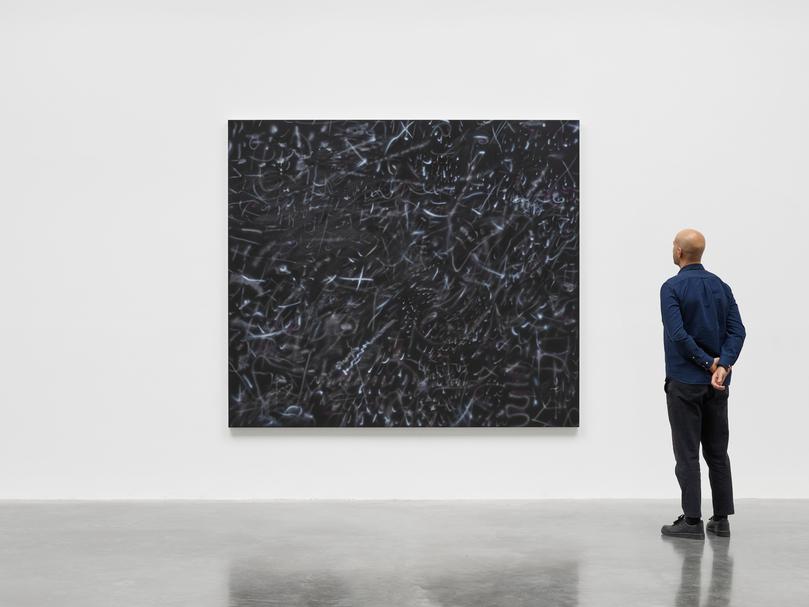
There is an intellectual justification for all this “invisible” rhetoric in a phrase by the French-Caribbean theorist, Édouard Glissant, who wrote about “the right to opacity”. This term, invoked repeatedly, is treated in the same manner that medieval scholars viewed Aristotle’s pronouncements – as a faultless key to some higher truth.
Mehretu herself says “abstraction exists wthin the space of opacity, it is a language of liberation.” This takes us beyond the idea that an abstract painting may simply be hard to understand, and on into politics - vitally connected with movements for social justice and decolonisation. It’s made abundantly clear that Mehretu is a passionate supporter of Black Lives Matter, and an enemy of “the machinations of white supremacy.”
I daresay most of us would agree with these sentiments, but is this relevant to the way we view these relentlessly abstract paintings? Only if you are speaking to an audience that is already in-the-know. This audience is addressed by a dialogue between Mehretu, Australian artist, Daniel Boyd, and curator, Jane Devery.
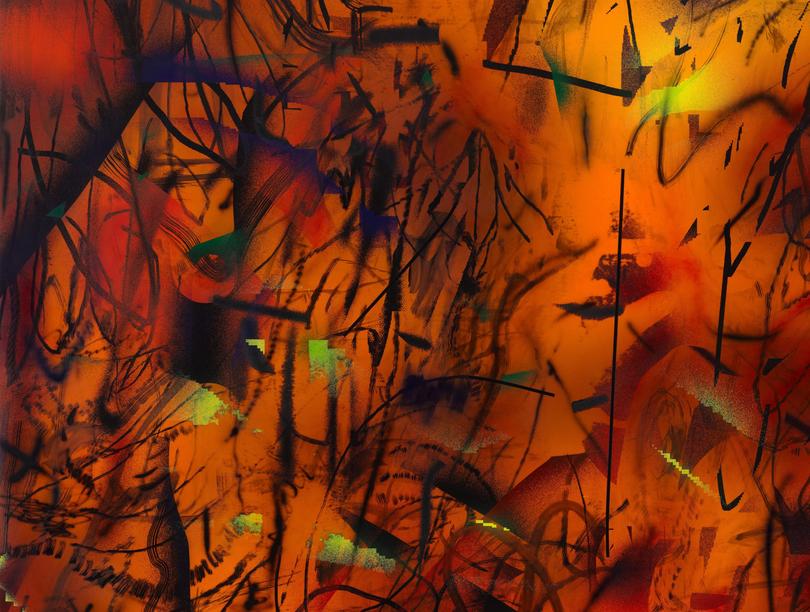
“Radical liberatory practices come from breaking away from these ideas of authenticity, language, identity, culture, form of determinism,” says Mehretu. “So much of the Black radical tradition has been based in abstraction for precisely this reason.”
Boyd argues: “because we’re oppressed people and we’re colonised, we have to exist in politicised [circumstances].”
Yet, unlike Boyd, there can’t be many oppressed people who had their entire first exhibition acquired by the National Gallery of Australia. Or at the age of 39 were given a mid-career retrospective by the Art Gallery of NSW that ran for seven months. That’s the kind of oppression most artists would cheerfully endure.
Mehretu ends this mutual admiration session by declaring: “there is something sacred in the things we make.”
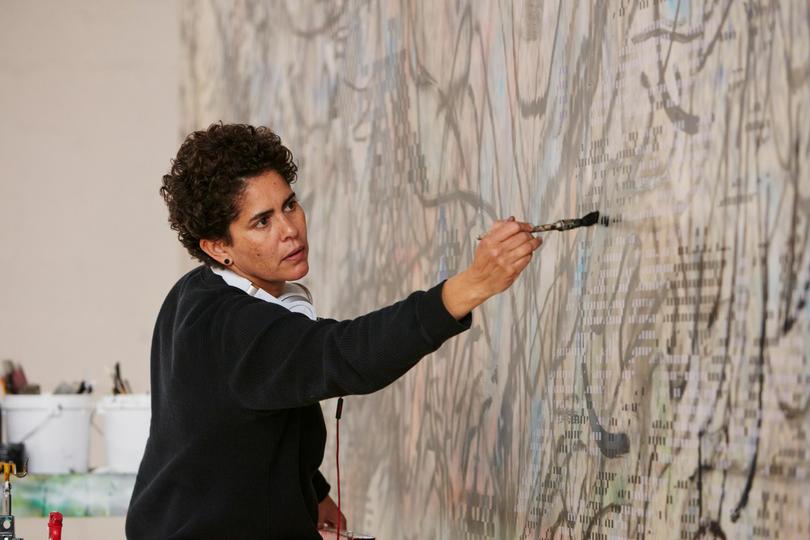
I could go on, but the basic point is that all this earnest chat about radical politics, black identity, sacredness, and so on, does not make the slightest difference to the viewer who has not imbibed the artist’s gospel in advance.
If one is sufficiently impressed by Mehretu’s work, that’s a reason to go digging deeper into its origins and ambitions. It’s a different matter to proclaim a revolutionary role for abstract art as if it were a natural fit for black people who want to overcome their “oppression”. When Mehretu tells us the “false binary of abstraction and figuration” is “bound up with the modern colonial Eurocentric understanding of a nation state,” it’s a ludicrously sweeping proposition.
It may be a false binary for the artist because we learn that her TRANSpaintings also contain carefully selected photographic images “of war, struggles for statehood and sovereignty, mass migration and environmental catastrophe.” So artfully are these images concealed that nothing is visible apart from coloured blurs and lines. We are expected to feel the presence of these ghostly images of disaster even if we can’t see them.
Neither is it clear how Mehretu can hold such radical ideas about abstraction but be responsible for a 25 X 7 metre mural in the lobby of the Goldman Sachs building in Manhattan, which she has described as “a spatial history of global capitalism.”
It can’t be easy to reconcile a huge commission for a firm of merchant bankers with those views about the radical, liberatory role of abstraction. In 1932, Diego Rivera, a card-carrying Communist, painted a mural for John D. Rockefeller but included a portrait of Lenin, which led to the work being destroyed. Superficially, an entirely abstract mural runs no risk of meeting the same fate, regardless of how many subversive (if invisible) details it might contain.
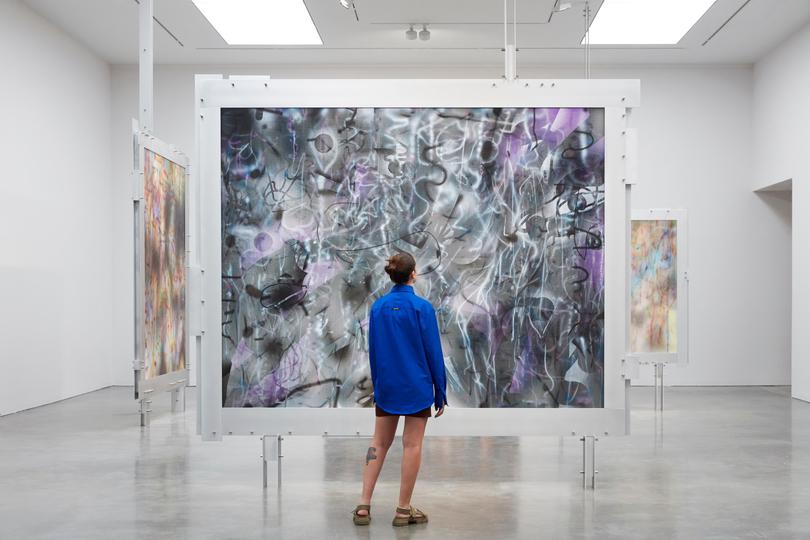
One of the major criticisms of the avant-garde art of the 1960s was precisely the empty, decorative nature of those large abstract paintings and sculptures. Mehretu wants us to believe her abstraction is precisely the opposite of those formalist works, being completely aligned with liberatory identity politics. We are quick to forget that every new form of abstraction, was hailed in similarly revolutionary colours.
I’d advise viewers to bypass all the verbiage and try to experience Mehretu’s paintings as sheer visual sensation. In this sense, there are three stand-out works: Sumo (2024), Murmurings in the Antipodean (2023-24), and Hineni II(2019-20).
This trio of paintings present a whirlwind of calligraphic marks set against a complex mesh of colours and surface textures. They feel more arbitrary and unstructured than Jackson Pollock’s Abstract Expressionist drips and make use of a greater range of techniques. In place of composition there is a furious improvisation, which Mehretu relates to jazz musicians such as John Coltrane.
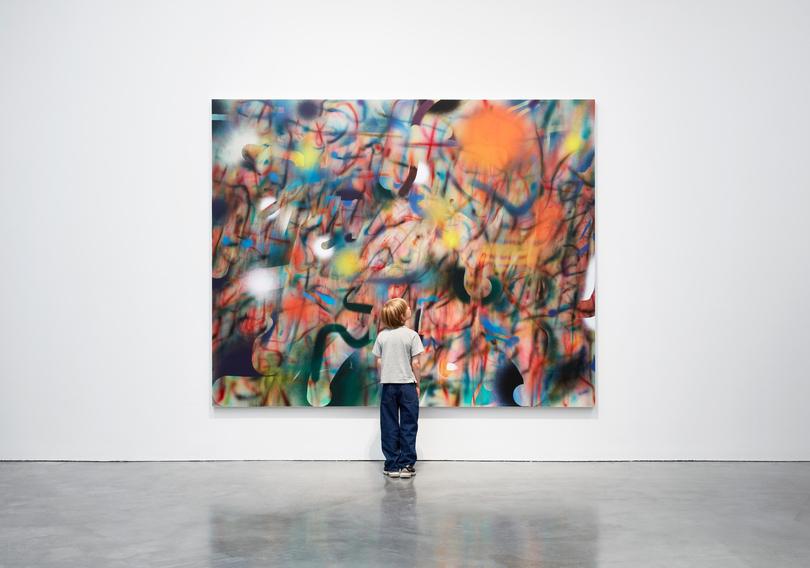
Hineni II refers to the story of Moses and the burning bush, but it’s also a painting about the wildfires – bushfires in local parlance – that are becoming more frequent because of climate change. One need not know this to appreciate a blazing, spectacular painting that virtually radiates heat. This work would be nothing but a raging inferno no matter how we approached it.
By contrast, I found the TRANSpaintings and a series of black canvases called Femenine in nine (2023), to have a repetitive, formulaic dimension that didn’t encourage any depth of emotional engagement. It’s odd to think that when all the blather and hype is stripped away from Mehrutu’s work, we are left with the same urgency of feeling that Rothko sought.
He saw the 1950s as a time of doom and tragedy, she has an equally apocalyptic take on the present day. Having the right politics may be a plus in the overheated political climate in which contemporary art wallows, but when the dust settles it will be those works that appeal directly to the viewer’s senses, not their conscience, that will determine how long an artist holds their place on the museum walls.
Julie Mehretu: A Transcore of the Radical Imaginatory
Museum of Contemporary Art, Sydney
Until 27 April 2025
